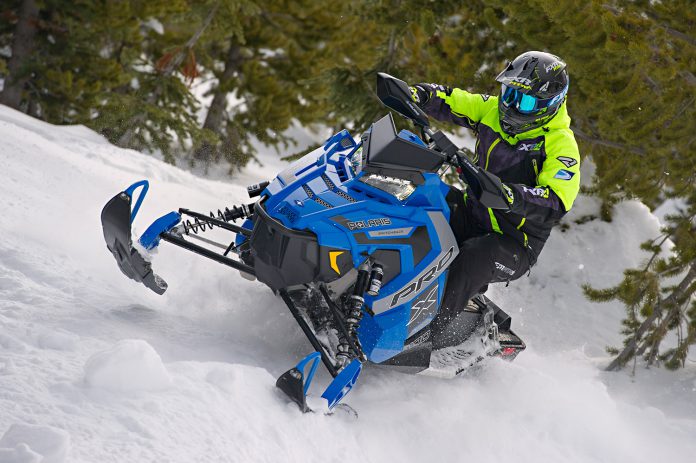Cleanfire is the Polaris nomenclature for its Semi-Direct Injection (SDI) technology used on both its 600 and 800cc USA-built 2-stroke twins.
Semi-Direct technology has been around in the snowmobile biz since the early two-thousands and was initially offered by Ski-Doo prior to the introduction of the company’s trademark E-TEC Direct Injection.
In a 2-stroke, Direct Injection effectively seals off the bottom end from inducted oil and fuel and places the fuel injectors right in the combustion chamber, usually at the top of the piston. This is not the case with SDI. The principle behind SDI is to allow the engine to run as lean as possibly safe to deliver clean exhaust.
In a Semi-Direct Injected engine like Cleanfire, the fuel injectors are located in the boost ports and deliver gasoline to the top of the piston as crankcase pressure moves the charge up through the boost ports.
Meanwhile, oil in minimal mounts, metered by an electronic oil pump, is injected into the crankcase. Residual oil is transferred to the top of the pistons as the engine cycles so there is adequate lube for the cylinder walls and piston rings.
In order to meet EPA standards, it’s really important with an SDI engine to use a “knock” or detonation sensor. This electronic device, usually mounted on the cylinder head, “senses” an overly lean situation with the fuel-air mixture and alters engine timing to keep heat to a minimum. Today, you can drive a Cleanfire with a knock sensor and it’s so subtle you may not even know it’s working.
Cleanfire has really perfected SDI technology so it is transparent and both the 600 and 800 deliver extremely good bottom end power with incredibly crisp throttle tip-in and response. It’s no surprise they do; these engines are designed to run really lean all the time and that’s exactly what you get with a race engine.
At the same time, the crankcase is getting sufficient lubrication and is kept cool without the need for liquid-cooled cases.




